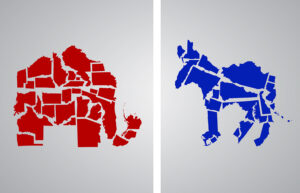Artificial Intelligence (AI) technology has revolutionized various industries, and one area where it is making a significant impact is in tornado storm chasing. AI technology refers to the development of computer systems that can perform tasks that typically require human intelligence, such as visual perception, speech recognition, and decision-making. In the context of tornado storm chasing, AI technology is being used to enhance weather forecasting and tracking capabilities, ultimately improving our ability to predict and respond to tornadoes.
Traditionally, weather forecasting methods relied on meteorologists analyzing data from weather satellites, radar systems, and weather stations to predict the occurrence and movement of tornadoes. While these methods have been effective to some extent, they have limitations in terms of accuracy and timeliness. This is where AI technology comes in. By leveraging machine learning algorithms and real-time data analysis, AI-enabled tornado storm chasing systems can provide more accurate and timely predictions, allowing for better preparedness and response.
Key Takeaways
- AI technology is revolutionizing weather forecasting and tornado storm chasing.
- Traditional weather forecasting methods have limitations that AI can overcome.
- Machine learning plays a crucial role in predicting tornadoes and tracking them in real-time.
- AI-enabled tornado storm chasing can improve tornado warning systems and disaster management.
- Ethical considerations must be taken into account when using AI technology for tornado storm chasing.
Understanding the limitations of traditional weather forecasting methods
Traditional weather forecasting methods involve the collection and analysis of various meteorological data to predict weather patterns. Meteorologists use historical data, current atmospheric conditions, and mathematical models to make predictions about future weather events. While these methods have been refined over the years and have proven to be useful in many cases, they are not without limitations.
One limitation of traditional weather forecasting methods is the reliance on historical data. While historical data can provide valuable insights into weather patterns, it does not account for the dynamic nature of the atmosphere. Weather conditions can change rapidly, and relying solely on historical data may not accurately capture these changes.
Another limitation is the complexity of atmospheric conditions. Weather patterns are influenced by numerous factors, such as temperature, humidity, wind speed, and air pressure. Traditional forecasting methods often struggle to accurately model these complex interactions, leading to less accurate predictions.
Additionally, traditional weather forecasting methods may not provide real-time updates. Weather conditions can change rapidly, and timely information is crucial for effective tornado storm chasing. Traditional methods may not be able to provide the level of real-time data analysis needed to accurately track tornadoes.
How AI technology is revolutionizing weather forecasting
AI technology is revolutionizing weather forecasting by addressing the limitations of traditional methods. Unlike traditional forecasting methods that rely on historical data and mathematical models, AI technology leverages machine learning algorithms to analyze vast amounts of real-time data and make predictions based on patterns and trends.
One key difference between AI technology and traditional forecasting methods is the ability to process large amounts of data quickly. AI-enabled systems can analyze data from various sources, such as weather satellites, radar systems, and weather stations, in real-time. This allows for more accurate and timely predictions, as the system can quickly identify patterns and trends that may indicate the formation or movement of tornadoes.
Another advantage of AI technology is its ability to adapt and learn from new data. Machine learning algorithms can continuously update their models based on new information, improving the accuracy of predictions over time. This adaptive learning capability allows AI-enabled systems to better capture the dynamic nature of atmospheric conditions.
The benefits of AI-enabled tornado storm chasing
The use of AI technology in tornado storm chasing offers several benefits. Firstly, it improves the accuracy of tornado predictions. By analyzing vast amounts of real-time data and identifying patterns and trends, AI-enabled systems can provide more accurate forecasts, allowing for better preparedness and response.
Secondly, AI technology enhances the timeliness of tornado predictions. Traditional forecasting methods may take hours or even days to process and analyze data, leading to delays in issuing warnings. AI-enabled systems can analyze data in real-time, providing more timely updates on tornado formation and movement. This allows for faster response times and better protection of lives and property.
Furthermore, AI-enabled tornado storm chasing systems can help optimize resource allocation. By accurately predicting tornadoes, emergency response teams can allocate their resources more effectively, ensuring that they are deployed to areas that are most at risk. This can help save lives and minimize damage.
The role of machine learning in predicting tornadoes
Machine learning plays a crucial role in predicting tornadoes. Machine learning algorithms are designed to analyze large amounts of data and identify patterns and trends. In the context of tornado prediction, these algorithms can analyze data from various sources, such as weather satellites, radar systems, and weather stations, to identify atmospheric conditions that are conducive to tornado formation.
Machine learning algorithms can learn from historical data and use this knowledge to make predictions about future tornado events. By continuously updating their models based on new data, these algorithms can improve their accuracy over time. This adaptive learning capability allows for more accurate and reliable tornado predictions.
Machine learning algorithms can also identify complex interactions between different meteorological factors that may contribute to tornado formation. Traditional forecasting methods often struggle to accurately model these interactions, but machine learning algorithms can analyze large amounts of data and identify patterns that may not be apparent to human meteorologists.
Real-time tracking of tornadoes using AI technology

Real-time tracking of tornadoes is crucial for effective tornado storm chasing. AI technology enables real-time tracking by analyzing data from various sources in real-time and providing updates on tornado formation and movement.
AI-enabled systems can analyze data from weather satellites, radar systems, and weather stations in real-time to identify atmospheric conditions that may indicate the formation or movement of tornadoes. By continuously analyzing new data as it becomes available, these systems can provide timely updates on tornado activity.
Real-time tracking allows for faster response times and better protection of lives and property. Emergency response teams can receive real-time updates on tornado activity and adjust their strategies accordingly. This can help ensure that resources are deployed to areas that are most at risk, improving the effectiveness of disaster management efforts.
The impact of AI on tornado warning systems
AI technology has a significant impact on tornado warning systems. By analyzing vast amounts of real-time data and identifying patterns and trends, AI-enabled systems can improve the accuracy and timeliness of tornado warnings.
Traditional tornado warning systems rely on meteorologists analyzing data from various sources to issue warnings. However, these systems may not be able to process and analyze data quickly enough to provide timely warnings. AI-enabled systems can analyze data in real-time, allowing for faster and more accurate warnings.
AI technology also enhances the ability to issue targeted warnings. By analyzing data from various sources, AI-enabled systems can identify areas that are most at risk and issue warnings specific to those areas. This allows for more effective communication of the threat and better protection of lives and property.
Furthermore, AI-enabled tornado warning systems can provide more detailed information about the severity and potential impact of tornadoes. By analyzing data on wind speed, size, and other factors, these systems can provide more accurate assessments of the threat level, allowing for better preparedness and response.
The future of AI-enabled tornado storm chasing
The future of AI-enabled tornado storm chasing holds great potential for further advancements in tornado forecasting and tracking. As technology continues to evolve, we can expect AI systems to become even more sophisticated and capable.
One potential future development is the integration of AI technology with unmanned aerial vehicles (UAVs) or drones. UAVs equipped with AI-enabled systems can be deployed to gather real-time data on atmospheric conditions and tornado activity. This would provide even more accurate and timely information for tornado forecasting and tracking.
Another potential development is the use of AI technology in predictive modeling. By analyzing vast amounts of historical data, AI-enabled systems can identify long-term trends and patterns that may indicate changes in tornado activity over time. This could help improve our understanding of tornado behavior and enhance long-term forecasting capabilities.
Furthermore, advancements in AI technology may lead to the development of more user-friendly and accessible tornado tracking systems. This would allow individuals and communities to access real-time tornado updates and take appropriate actions to protect themselves and their property.
Ethical considerations in AI-enabled tornado storm chasing
While AI technology offers significant benefits in tornado storm chasing, there are also ethical considerations that need to be addressed. One ethical concern is the potential for bias in AI algorithms. Machine learning algorithms learn from historical data, which may contain biases or inaccuracies. If these biases are not addressed, they can lead to unfair or discriminatory outcomes.
Another ethical consideration is the potential for overreliance on AI technology. While AI-enabled systems can provide valuable insights and predictions, they should not replace human judgment and decision-making entirely. It is important to strike a balance between the capabilities of AI technology and the expertise of human meteorologists.
Additionally, privacy concerns may arise when collecting and analyzing large amounts of data for tornado forecasting and tracking purposes. It is crucial to ensure that data collection and analysis processes are conducted in a transparent and responsible manner, with appropriate safeguards in place to protect individuals’ privacy.
The potential of AI technology in improving weather forecasting and disaster management
In conclusion, AI technology has the potential to revolutionize tornado storm chasing by improving weather forecasting and tracking capabilities. By leveraging machine learning algorithms and real-time data analysis, AI-enabled systems can provide more accurate and timely predictions, allowing for better preparedness and response.
The benefits of AI-enabled tornado storm chasing include improved accuracy of tornado predictions, enhanced timeliness of warnings, optimized resource allocation, and real-time tracking of tornadoes. These benefits can help save lives and minimize damage during tornado events.
However, it is important to address ethical considerations surrounding the use of AI technology in tornado storm chasing, such as bias in algorithms, overreliance on technology, and privacy concerns.
Looking to the future, advancements in AI technology hold great potential for further improvements in tornado forecasting and tracking. Integration with UAVs, predictive modeling, and user-friendly systems are just some of the potential developments that could enhance our ability to predict and respond to tornadoes.
Overall, AI technology has the potential to greatly improve weather forecasting and disaster management, not only in tornado storm chasing but also in other areas of natural disaster response. By harnessing the power of AI, we can better protect lives and property in the face of severe weather events.
If you’re fascinated by the intersection of technology and extreme weather, you won’t want to miss this intriguing article on tornado storm chasing with AI. Discover how artificial intelligence is revolutionizing the way scientists and meteorologists track and predict tornadoes, making it safer and more efficient than ever before. To learn more about this exciting development, check out the related article on AI TV Media. And while you’re there, don’t forget to explore other thought-provoking topics such as smart stock choices, the impact of BRICS on the US dollar and BTC, and the fascinating relationship between AI and human behaviors.



